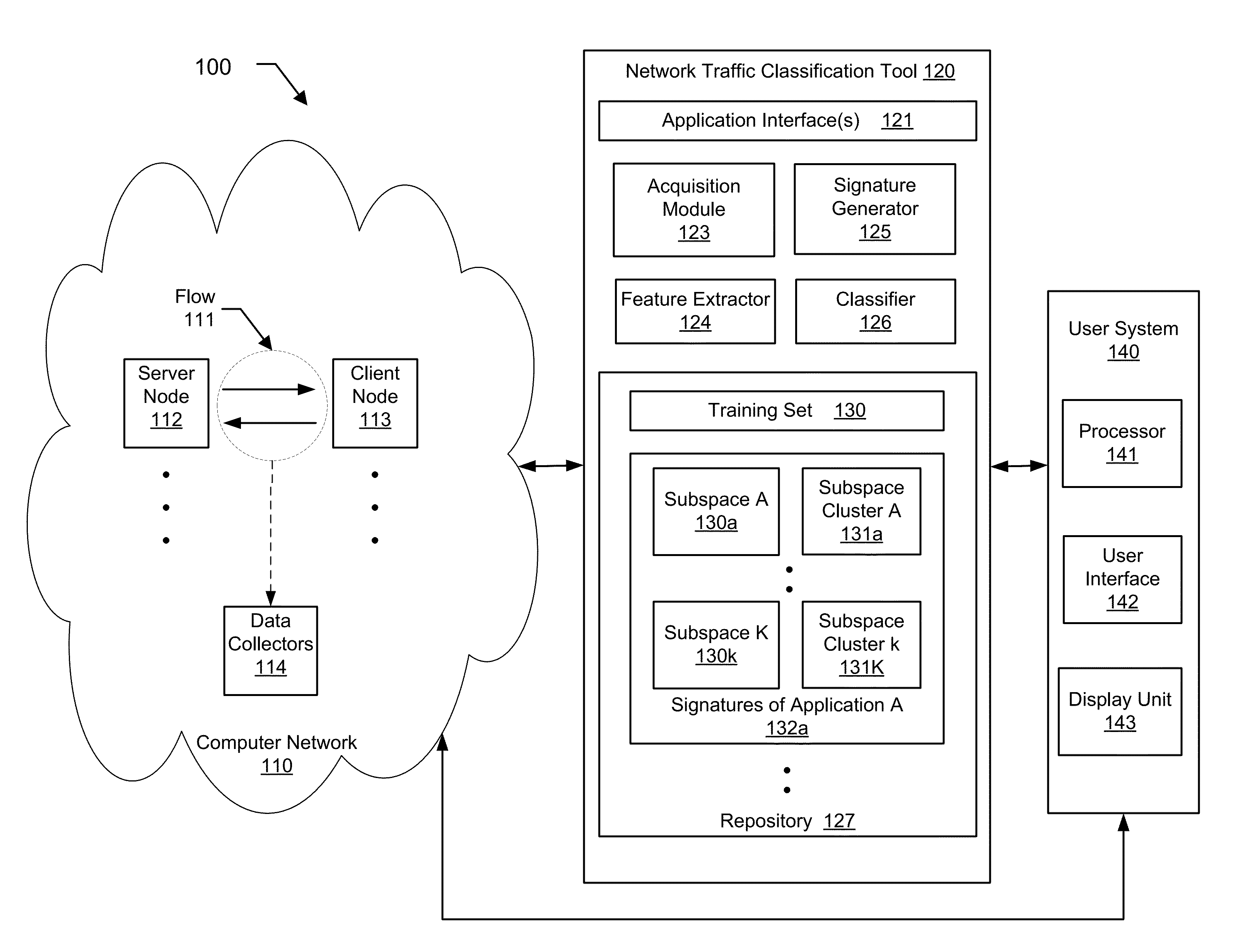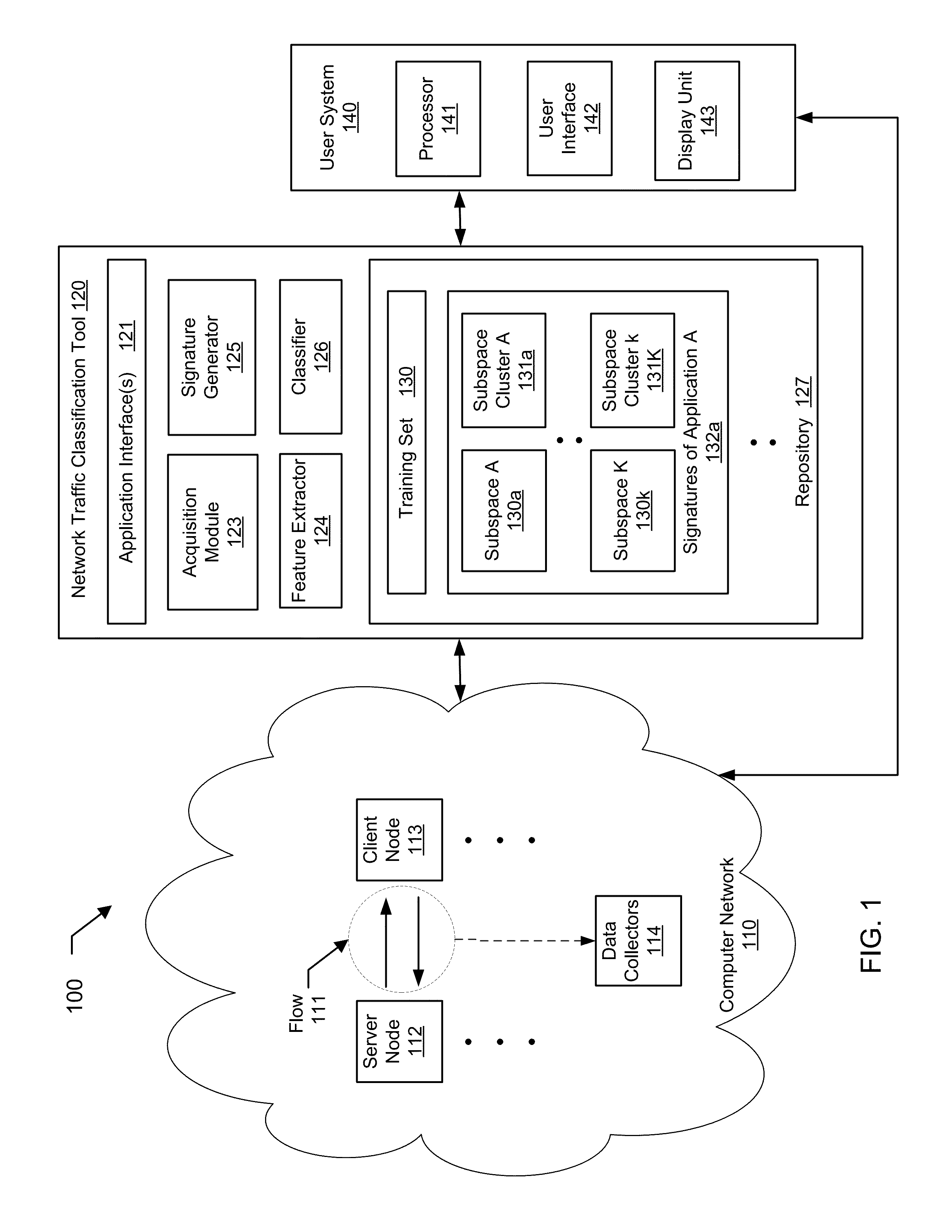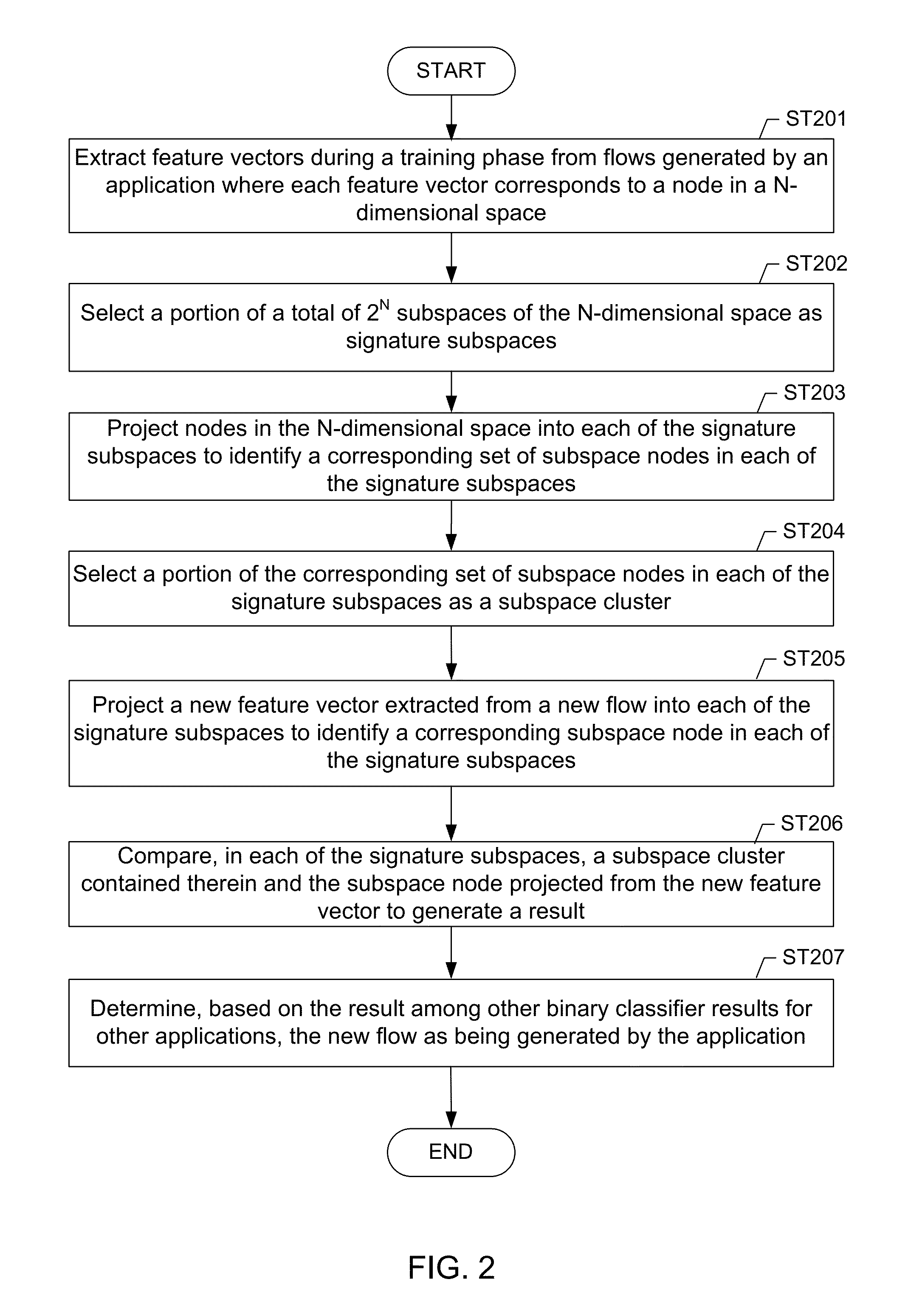Network traffic classification using subspace clustering techniques
a technology of network traffic and clustering, applied in the field of computer network and network traffic classification, can solve the problems of unreliable port-based classification, expensive and time-consuming process, failure to classify encrypted traffic,
- Summary
- Abstract
- Description
- Claims
- Application Information
AI Technical Summary
Benefits of technology
Problems solved by technology
Method used
Image
Examples
Embodiment Construction
[0016]Specific embodiments of the invention will now be described in detail with reference to the accompanying figures. Like elements in the various figures are denoted by like reference numerals for consistency.
[0017]In the following detailed description of embodiments of the invention, numerous specific details are set forth in order to provide a more thorough understanding of the invention. In other instances, well-known features have not been described in detail to avoid obscuring the invention.
[0018]Embodiments of the invention provide a method, system, and computer readable medium for network traffic classification. Specifically, for each incoming flow observed on a network, a classifier maps it to the application-layer protocol from which the flow is generated. Generally, the term “flow” may refer to a unidirectional flow or a bi-directional flow. A unidirectional flow includes only data packets traveling in one direction, either from server node to client node or vice versa....
PUM
 Login to View More
Login to View More Abstract
Description
Claims
Application Information
 Login to View More
Login to View More - R&D
- Intellectual Property
- Life Sciences
- Materials
- Tech Scout
- Unparalleled Data Quality
- Higher Quality Content
- 60% Fewer Hallucinations
Browse by: Latest US Patents, China's latest patents, Technical Efficacy Thesaurus, Application Domain, Technology Topic, Popular Technical Reports.
© 2025 PatSnap. All rights reserved.Legal|Privacy policy|Modern Slavery Act Transparency Statement|Sitemap|About US| Contact US: help@patsnap.com



